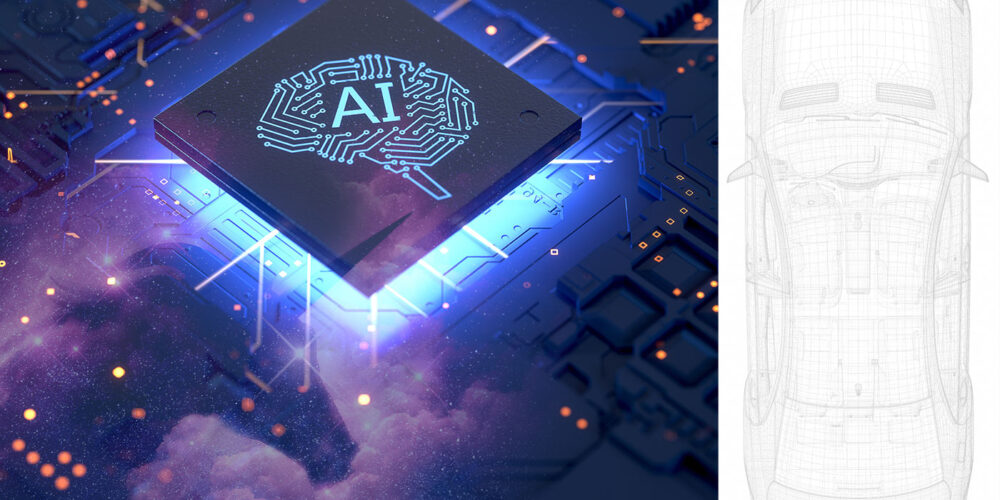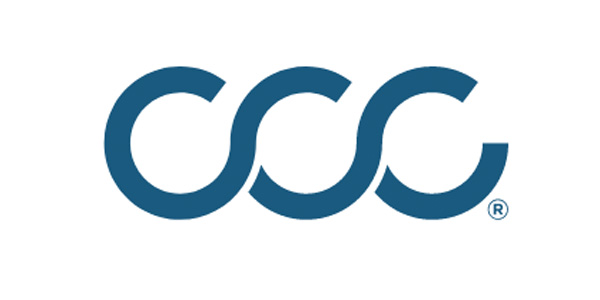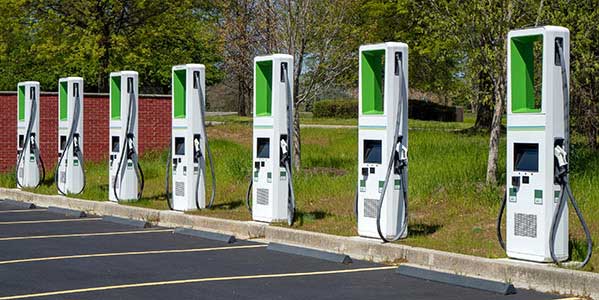Does anyone remember Deep Blue? The IBM supercomputer that beat world champion Garry Kasparov in a six-game chess match in 1996? That was a “wow” moment for me and one of the first examples of how powerful and effective artificial intelligence (AI) could be.
Here we are in 2024, and AI has permeated all aspects of our lives. When you rent a horror movie on Amazon Prime Video, you start seeing a “Movies We Think You’ll Like” section suggesting other horror-related flicks. That’s AI working invisibly in the background. When you click on a cooking video on Instagram and start seeing more cooking videos as “Suggested Reels” in your feed, that’s AI. When Google Photos assembles the latest snaps from your family vacation into a video, titles it “Trip to South Carolina” and adds background music, that’s AI.
Computer Vision
How is AI being used and applied in the auto body world? It’s largely centered around “computer vision,” which is a computer analyzing images and then taking that, along with other inputs, to help with writing an estimate or determining if a car is a total loss.
Mitchell International has been working on AI for the last five years as part of its long-term projects and recently debuted Intelligent Estimating, a claims automation solution that runs on AI — taking humans right out of the equation. Once photos of the vehicle are taken and processed, Mitchell translates the AI recommendations into actionable information that is based on the VIN, pre-populating part- and operation-specific estimate lines. An appraiser may then review and revise the estimate or use straight-through processing to complete the claim without human intervention, depending on the carrier’s business rules and severity of the damage.
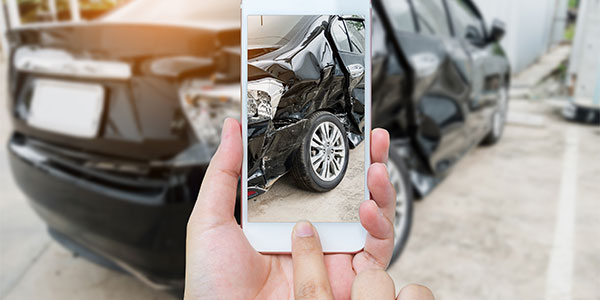
“This technology has the ability to triage a vehicle based mainly on photos but also on whether that car is a total loss, a certain total loss, possible total loss or clearly repairable,” said Jack Rozint, senior vice president, sales and service, repair, Auto Physical Damage Solutions, Mitchell International. “And that triage can happen at the first notice of loss, which is really important, because from a repairer’s perspective, if the car is determined to be repairable and then towed to their facility and it turns out it’s a total loss, that’s not a good thing, because they now have a piece of leaking, rusting metal sitting in their yard and have to wait until the property lien paperwork, titles, etc., are retrieved before the vehicle can be moved again. So that triage is really important for getting the vehicle into the right channel.”
Another ability of AI is to review an estimate that has already been written. Let’s say there is an estimate that has already been written by an appraiser or the shop, and now the insurance carrier is going to review it.
“[Insurance carriers] can run that estimate through an AI review process, and the computer looks at things like, was the panel repaired or replaced and was that a good decision?” Rozint says. “So the insurer might come back with, ‘It says you wrote to replace this panel; in our opinion, it can be repaired more cost effectively.’ The computers are actually quite good at making those judgements today and also providing fairly reliable confidence factors behind those judgments.
“Back in the day, the insurer liked to review every estimate, and that just doesn’t happen anymore. And particularly with DRPs [direct repair programs], in some cases it might only be 10% of the estimates that they actually physically go through line by line. When you have a computer that’s able to do at least that first pass because it’s very efficient, quick and inexpensive, you can run every estimate through and pop out the ones with the highest confidence factors that there may be opportunities to do things differently and more cost effectively.”
To make this straight-through processing of vehicles a reality, Mitchell has been collaborating with Tractable, a company that builds the AI tools of choice for world-leading companies connected to auto and property industries. Since the company announced this collaboration, its integrated solutions have been selected by top U.S. and Canadian insurers. It is Tractable’s proprietary computer vision combined with Mitchell’s cloud-based estimating system, open platform and repair data that lets carriers produce a partial or complete estimate automatically from photos of the collision damage.
Curating an Experience
James Spears, head of automotive and property for Tractable, says AI to him is really about allowing collision repairers to curate an experience for the customer and become a trusted advisor for them — something insurers used to do but have gotten away from.
“One of the things that we’re doing right now is teaming up with a website that handles the body shop cloud,” says Spears. “So when a customer wants to submit images of the damage to their vehicle to a body shop, I’m seeing the body shop transitioning to becoming the trusted entity and advisor to say, ‘Yes, your car is repairable and it should be X amount of dollars.’ Because as a consumer, what you really want to know is: Does it breach my deductible or not?”
AI, with 95 to 97% certainty, Spears claims, can determine whether a vehicle is repairable or not, which is crucial to allowing all parties in the transaction to know what journey they’re going to be on. And if a body shop can be the one to make that determination over the insurer, again, it becomes the trusted advisor, and the customer experience will be far superior to what the insurers can do, Spears asserts.
“With the first notice of loss, which I see particularly with OEM certification programs where the OE is directing the process and recommending certain OE-certified shops, those shops are able to say, ‘Insurance Company XYZ, we have your policyholder’s car here, and here are some images and an estimate.’ Again, we’re curating the journey.”
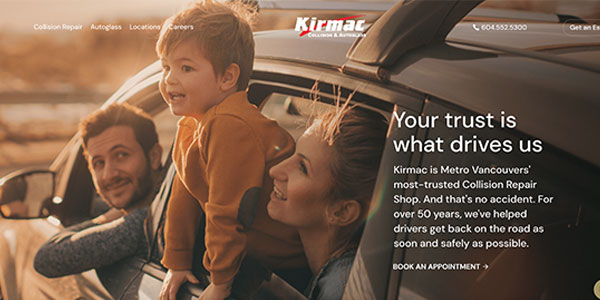
He cites Kirmac Collision in Canada as an example, which has a “robot” on its website that greets visitors and says, “We’ll estimate your car.” That is Tractable’s technology.
Besides the U.S. and Canada, Tractable does business with about 91% of the insurance market in Japan for auto claims and is also in Europe, including France, Poland and the U.K. It’s also doing business with a top five carrier in the U.S. who uses its product as a review entity to significantly accelerate its claims.
“We’re able to review those claims and say, ‘Yes, the claim is submitted and matches the profile that you would use. Let’s pay this one very quickly,’” Spears says. “So we’re seeing cycle times really accelerate.”
Spears recalls his time managing USAA’s auto collision business out of San Antonio, where some of the DRP contracts had incentives in them based on customer service, repair quality and cycle time. He is seeing AI being used by carriers in a way that improves consumers’ perception of the body shop — because a lot of times, they’ll blame the body shop if the cycle time is longer, not thinking that it’s something on the back end of the process with an insurance company.
“That’s where we’re realizing our AI benefit quite a bit — to accelerate that agreement and then get that payment through.”
And body shops get paid that much faster.
Innovative Solutions
CCC Intelligent Solutions has been working on and developing AI technology for the last seven years.
“We saw opportunities to leverage artificial intelligence pretty early on,” says Mark Fincher, vice president of market solutions for CCC. “We built an entire dedicated team of data scientists and engineers to build an entire platform that can use the massive amounts of historical data that we have to build these AI models to be able to bring new innovative solutions that can help insurers, repairers and other parts of the [automotive] ecosystem to really streamline the work that they do.”
Fincher says the goal was also to see if AI could, in some cases, be more accurate than humans when it comes to estimating, assessing repair damage, etc.
“One of the big goals for us was to move to this concept of straight-through processing, where you can have AI write an estimate where a human doesn’t have to intervene, and it’s sufficient enough to be able to provide the consumer an initial assessment of damage,” Fincher says.
If a consumer can visit a body shop’s website and upload photos of the damage to his or her vehicle, instead of waiting an hour, four hours, eight hours, or maybe a day or two for the shop to write that estimate, he or she can get instant responses back. That’s how CCC’s Repair Cost Predictor works. When the consumer requests an online estimate, assuming the images are of sufficient quality to be able to apply AI to them, CCC will use historical data to then make a prediction on what the range of cost is and provide that information back to the consumer instantaneously.
“Within seconds, we’ll provide that range back, and they can see that damage is between $2,000 and $2,600, and then they can make the determination if they want to go ahead and bring the car in for repair or not,” says Fincher.
“Part two of that, in terms of AI solutions that we launched last year for repairers, is our Jumpstart IQ solution. Now, the consumer actually shows up and is physically present, and instead of the shop having to go out and take a bunch of notes on a pad (which we still see happening today despite the fact that we have mobile estimating on CCCOne.com), they can actually have AI ‘jumpstart’ that estimate after they take photos of the damage.
“They capture three photos of the damage, and we run our artificial intelligence against those images to determine where the damage is on that specific vehicle. We then prompt the user or professional human estimator, who can then either agree or disagree with the AI based on their personal history and experience, and add additional operations or additional damage that maybe the AI did not detect because it was hidden, such as suspension damage things or an absorber behind a bumper.”
One of the biggest challenges for CCC is getting the word out to collision customers that this technology exists. The company does over 200 releases a year, so to be able to communicate that, even with a “What’s New” document it sends out, can be daunting.
“We keep hearing these anecdotal stories of our folks in the field going out to see customers who say they had no idea this was there. I go into shops all the time, and they say, ‘Man, if you could only do this,’ and I say, ‘We did that two years ago; it’s been in the system for two years,’” Fincher says.
The good news is CCC is really starting to see collision customers use CCC Engage (which it launched last summer) and activate the repair cost predictor.
“It’s not a new product, it’s not an additional fee for the shops, and it’s included for all any shop using CCC One estimating,” says Fincher. “It’s included for them in their existing solution.”
Summary
Whether we like it or not, AI and the future is here, and there are clear benefits to all parties in the collision repair process — the consumer, insurer and repairer.

